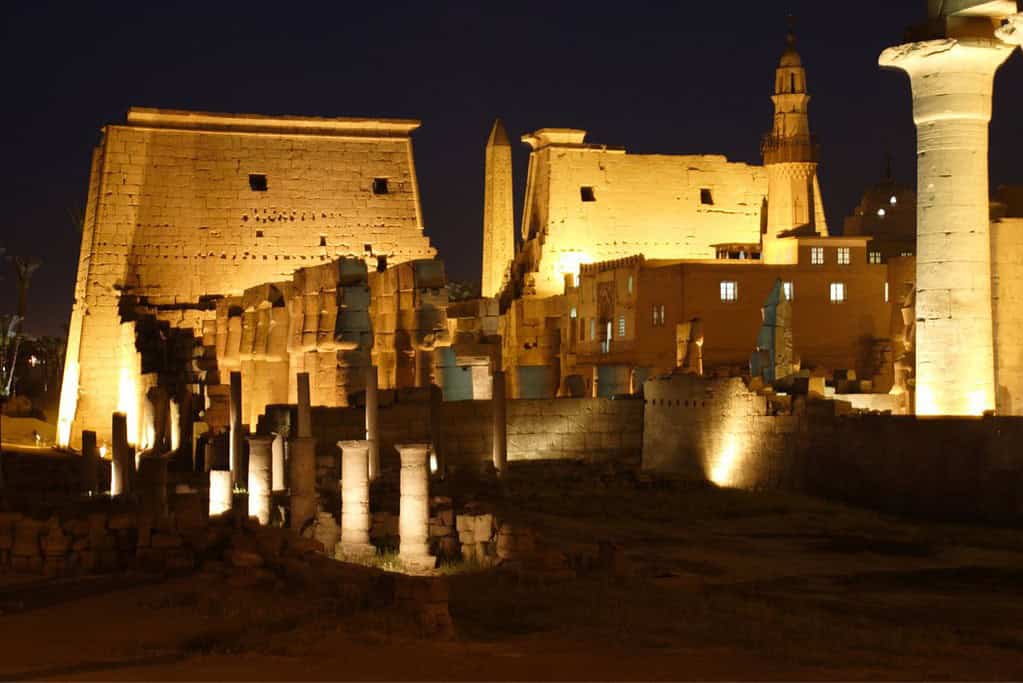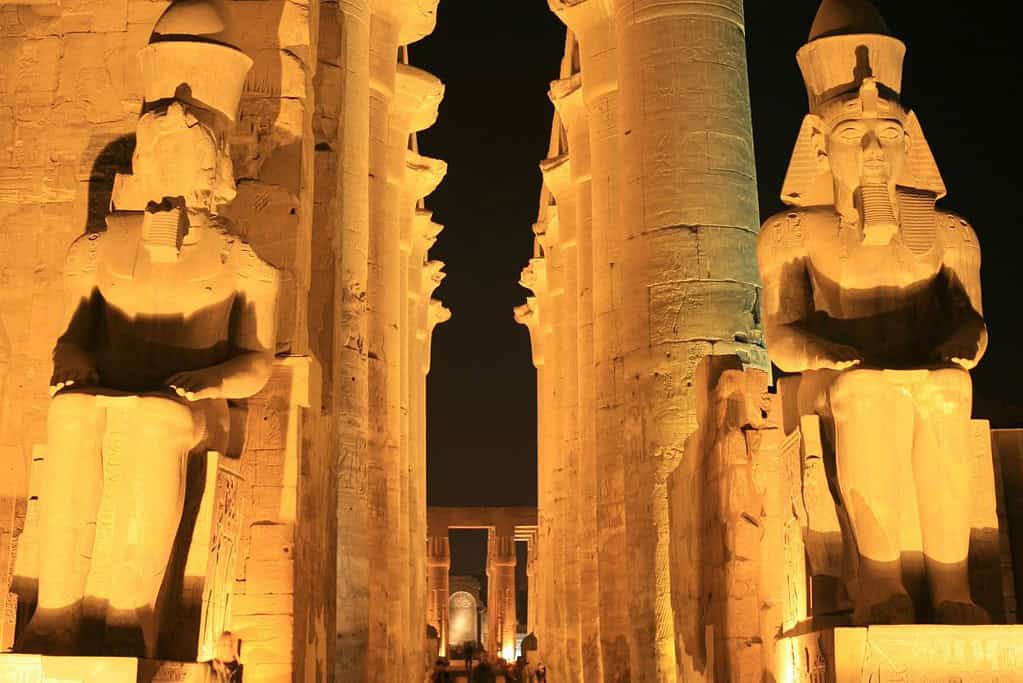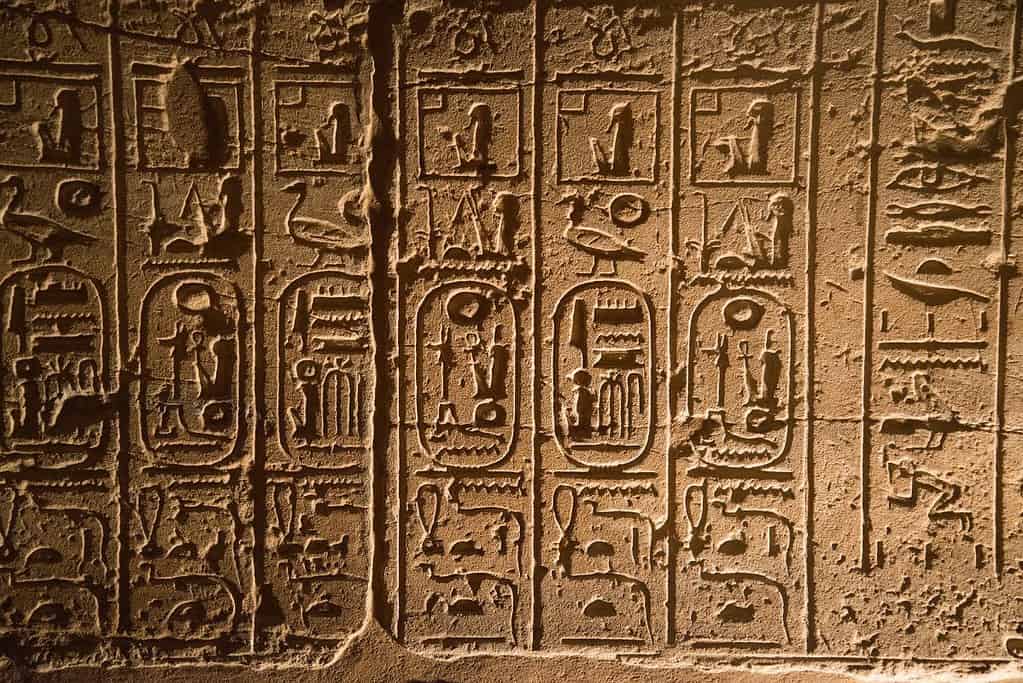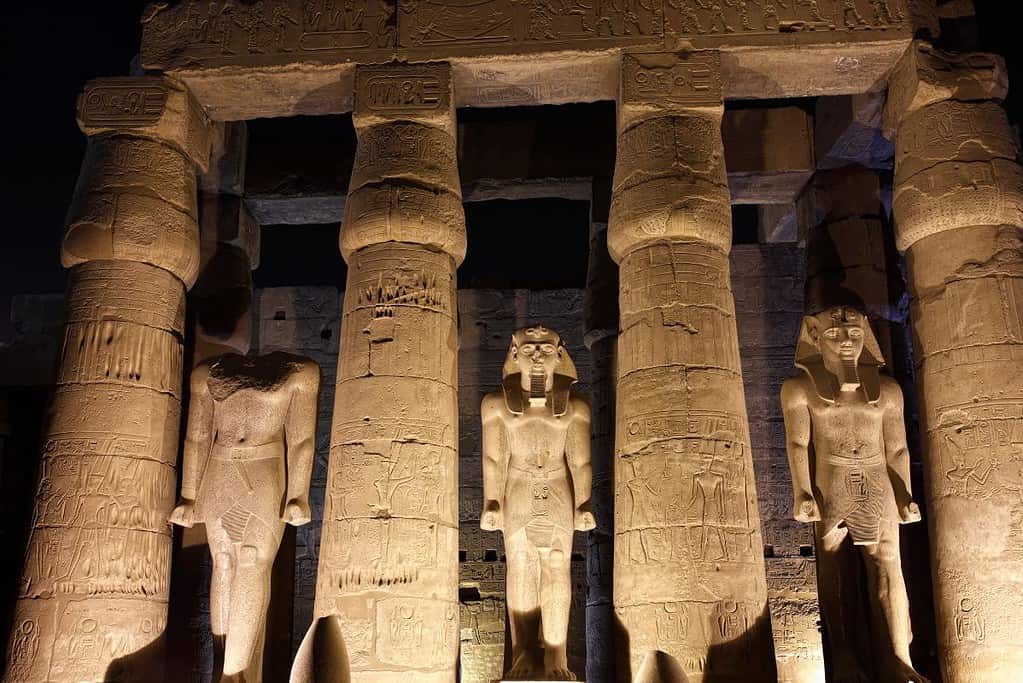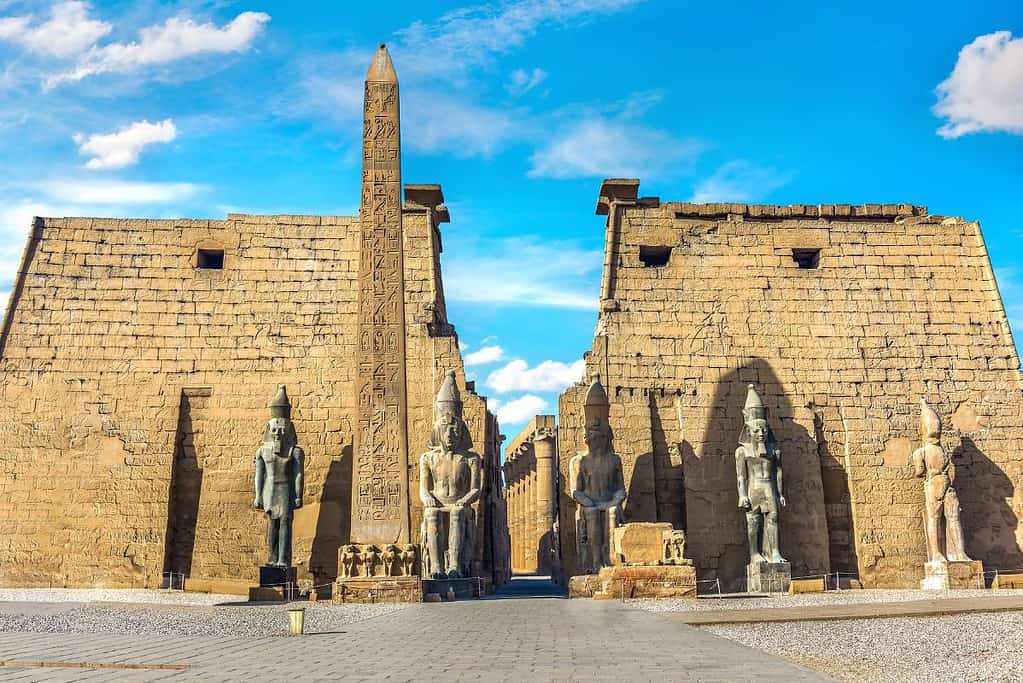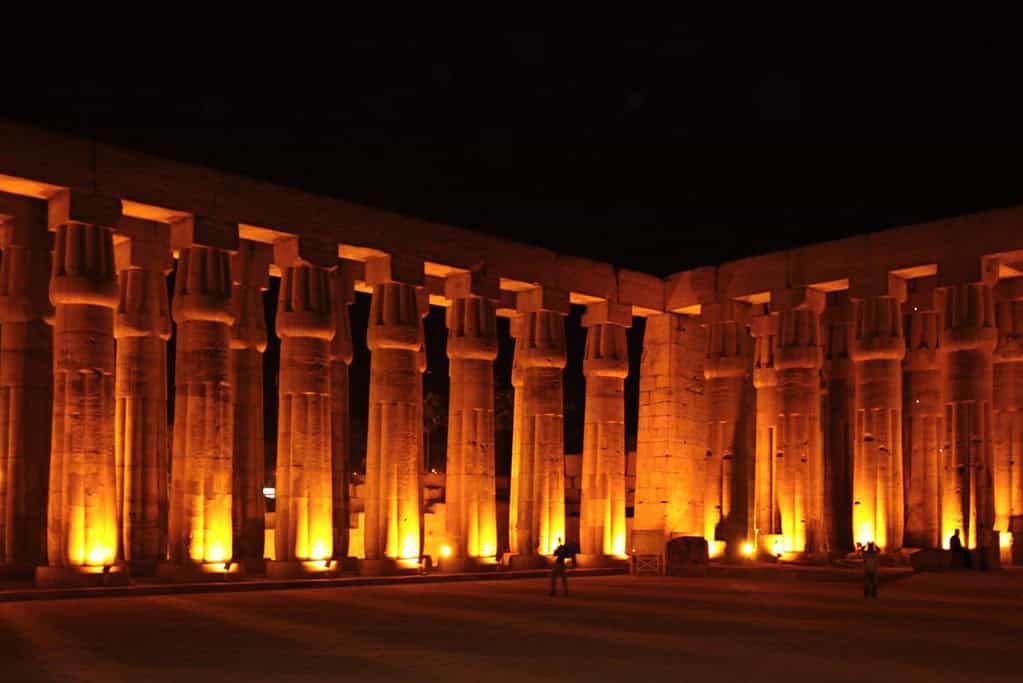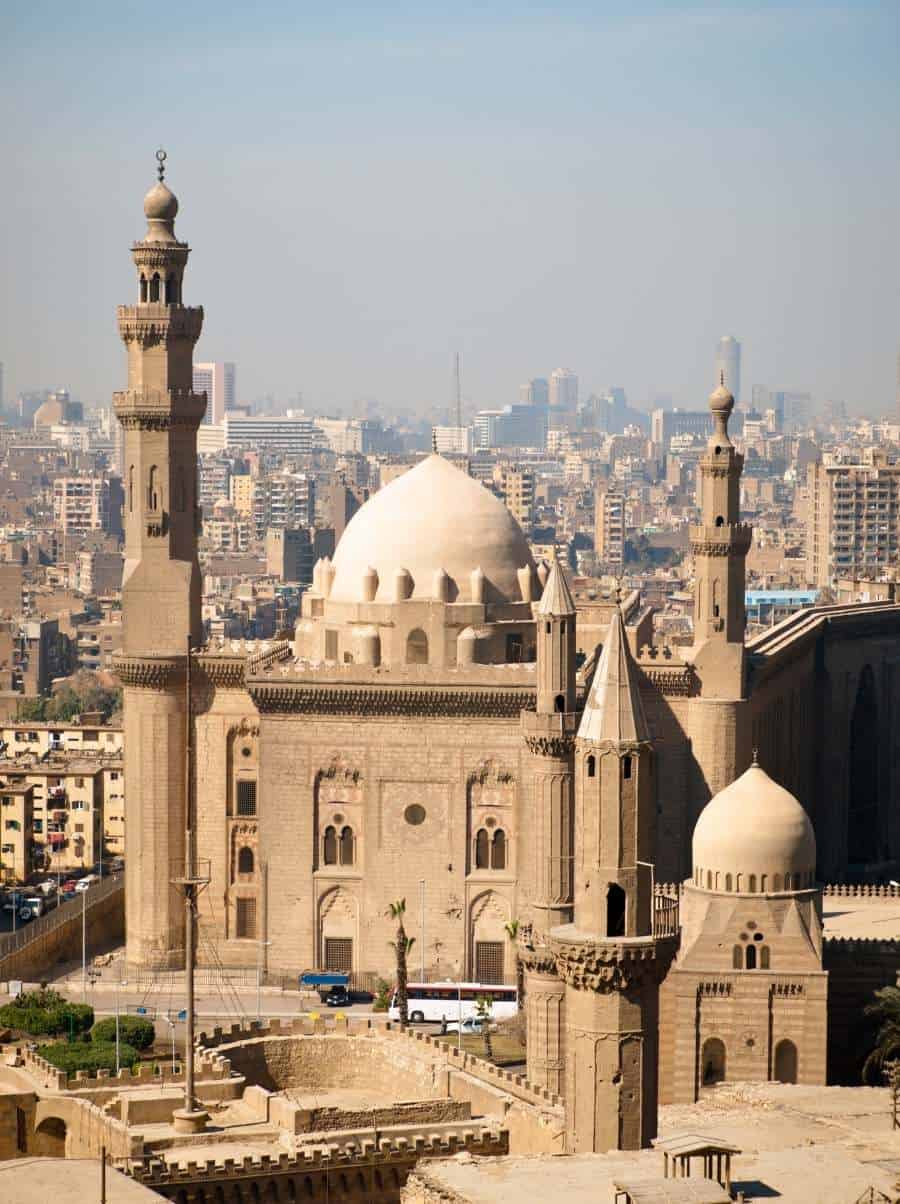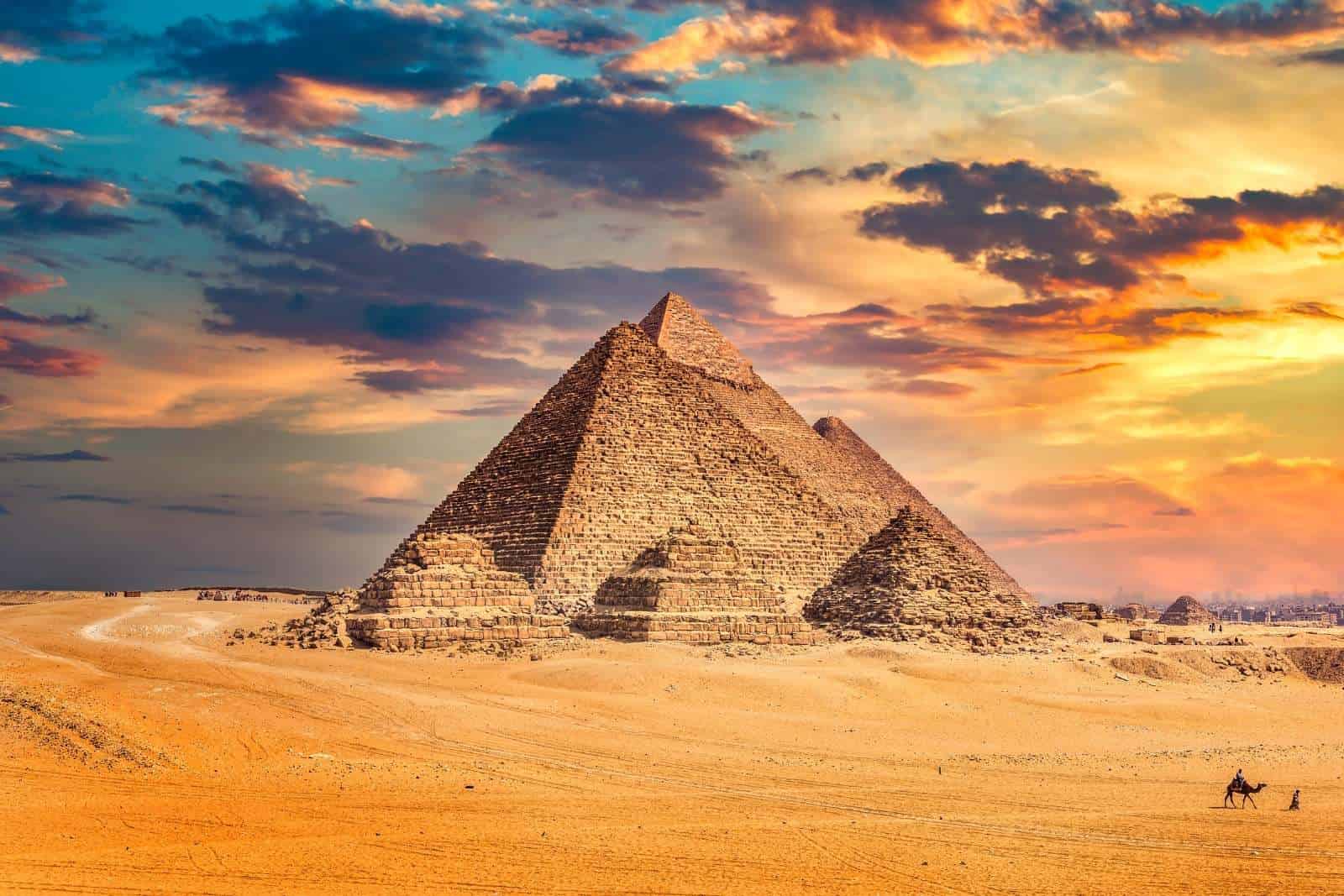Table of Contents
Travel to Luxor Temple, situated in present-day Egypt, is an essential destination for history and archaeology enthusiasts. Founded around 1400 BC, the Temple of Luxor was a vital site in ancient Egypt, serving as a religious and cultural center. This magnificent temple complex is a UNESCO World Heritage Site located within the ancient city of Thebes.
Visiting the Temple of Luxor, you can marvel at the grand entrance, marked by the imposing pylon with its colossal statues of Ramesses II. The temple features the Great Court of Ramesses II, the Colonnade of Amenhotep III, and the inner sanctuaries dedicated to the gods Amun, Mut, and Khonsu. Our Egypt tours, departing from Cairo or Luxor, offer a unique opportunity to immerse yourself in this awe-inspiring temple’s rich history and culture.
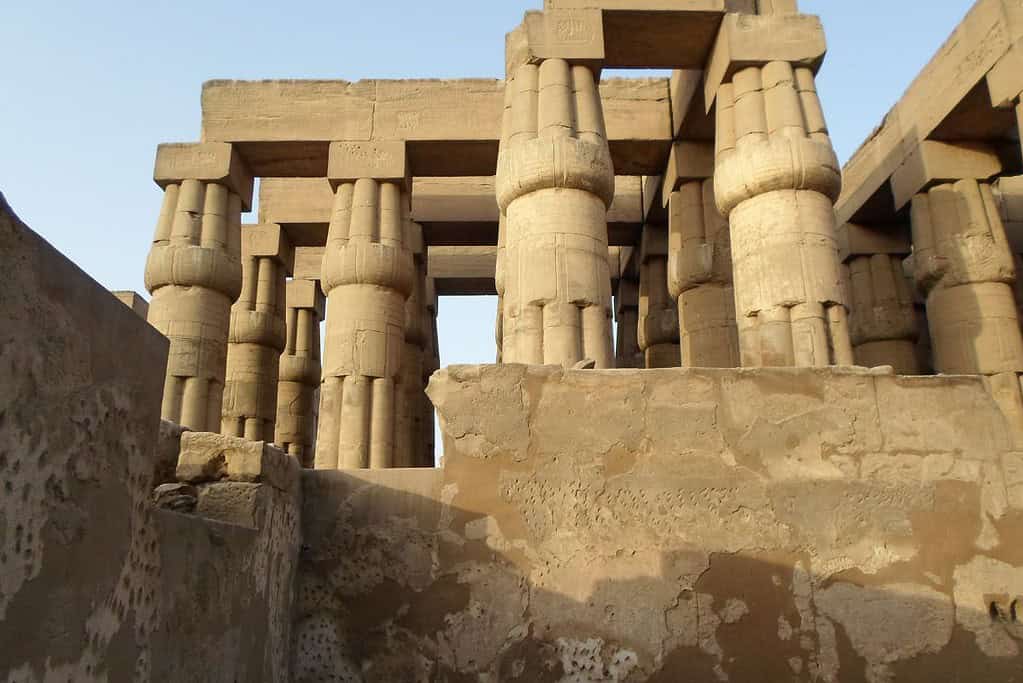
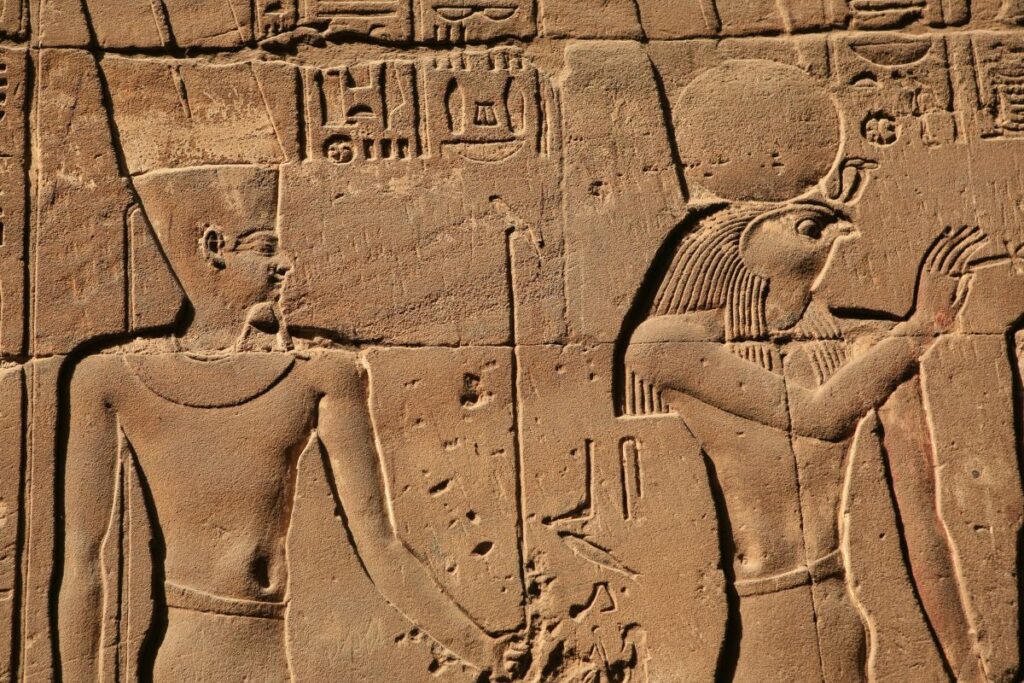
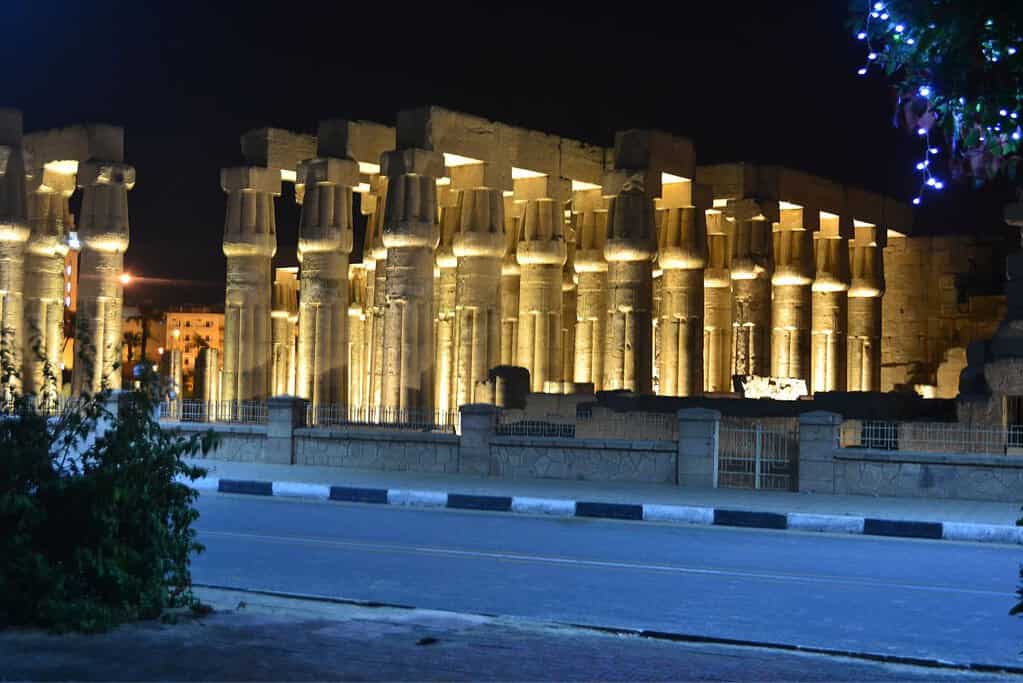
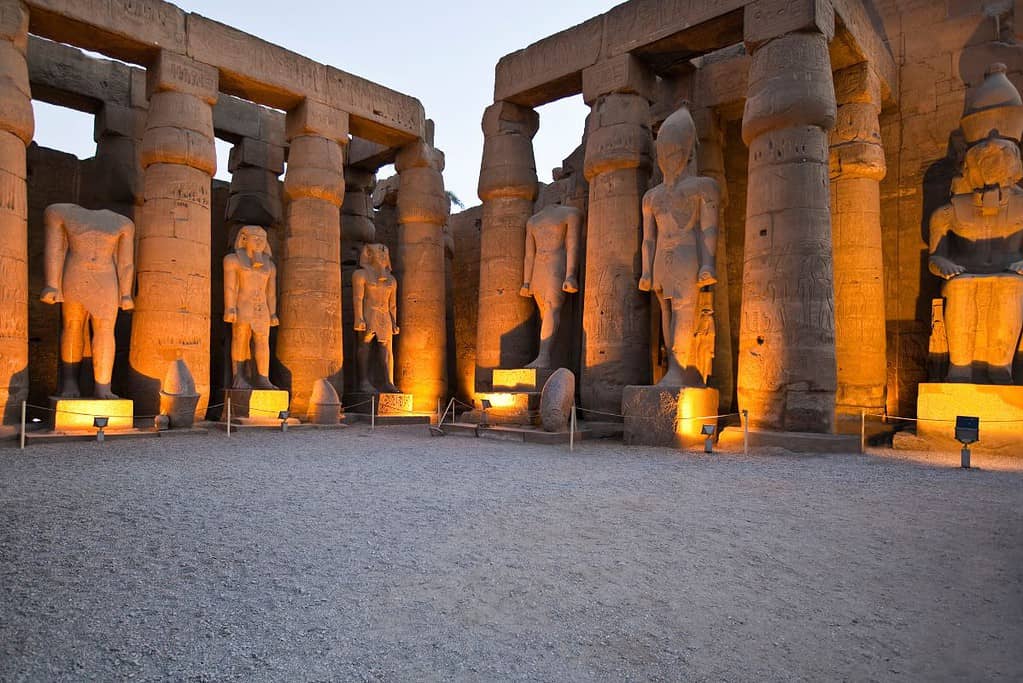
Luxor Temple Egypt
“Temple of Luxor was a significant religious and cultural center during the New Kingdom of ancient Egypt (16th-11th centuries BCE).”
Curiosities about the Temple of Luxor:
- The Temple of Luxor is located in present-day Egypt, within the ancient city of Thebes.
- It was an important religious and cultural center in ancient Egyptian civilization.
- The temple was dedicated to the gods Amun, Mut, and Khonsu.
- The Temple of Luxor features the Great Court of Ramesses II and the Colonnade of Amenhotep III.
- The impressive pylon and colossal statues of Ramesses II mark the entrance to the temple.
- Temple of Luxor was known for its intricate artwork, including the reliefs and inscriptions on its walls.
- The temple was connected to the nearby Karnak Temple via the Avenue of Sphinxes.
- Temple of Luxor is a popular tourist destination and a UNESCO World Heritage Site.
Visit Luxor Temple
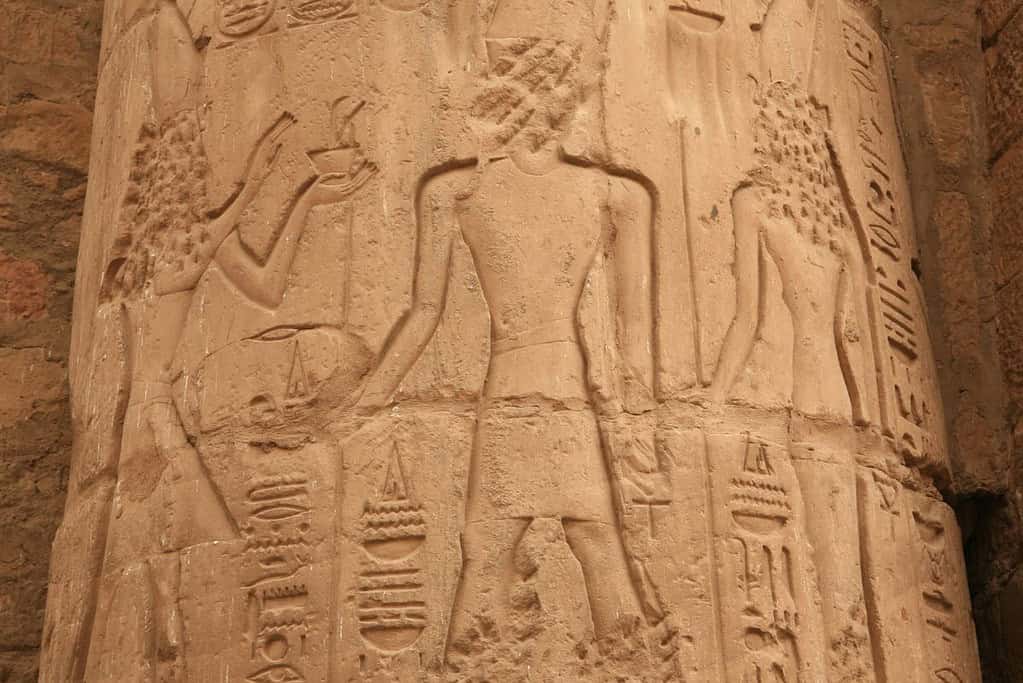
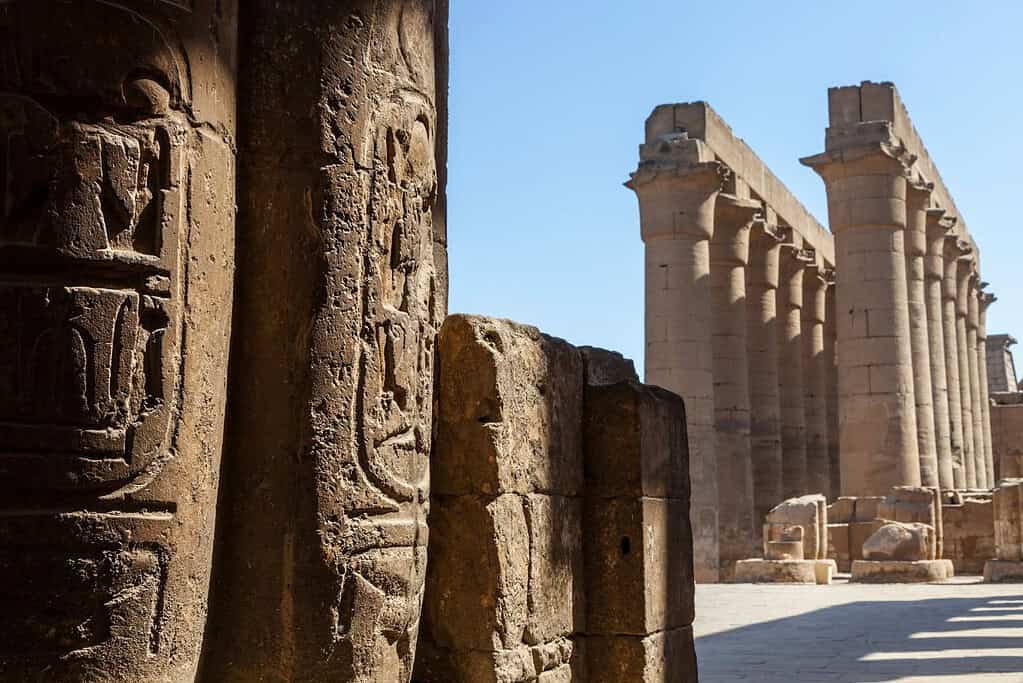
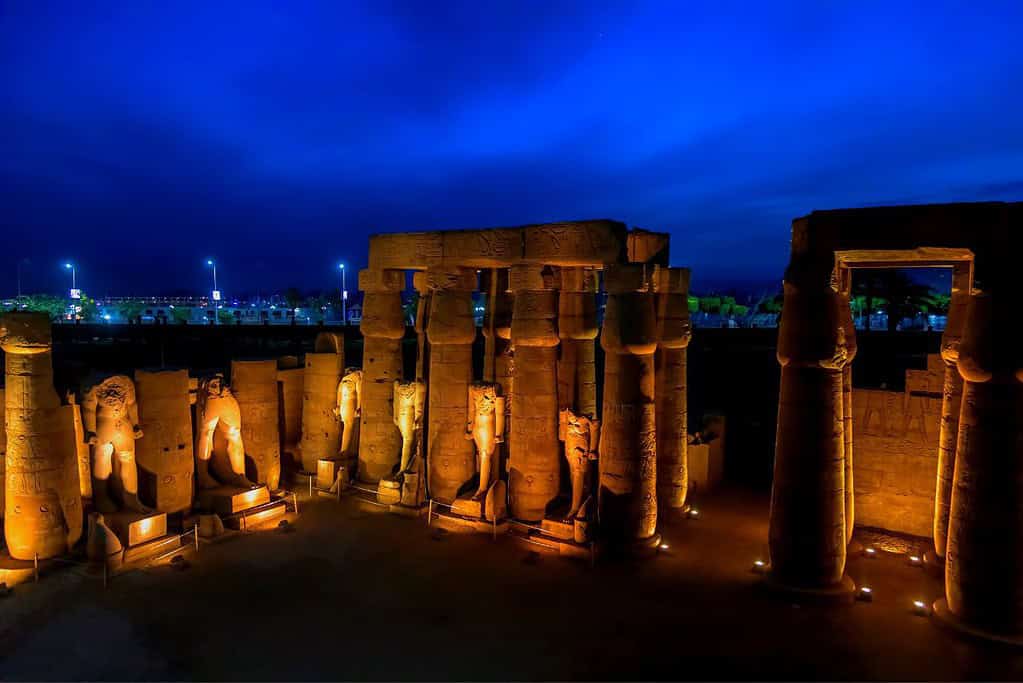
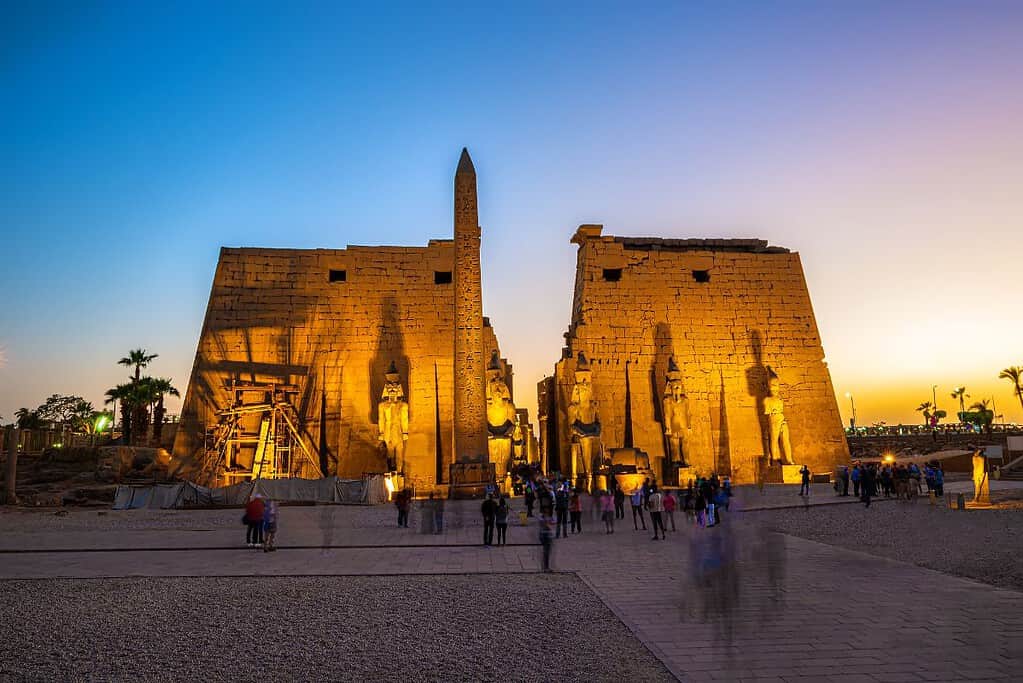
A great pylon marks the entrance to the Temple of Luxor with colossal statues of Ramesses II. As you enter the temple complex, you’ll be greeted by the Great Court of Ramesses II, adorned with colossal statues, intricate reliefs, and inscriptions.
The Colonnade of Amenhotep III, a breathtaking hallway lined with 14 massive columns, leads to the inner sanctuaries dedicated to the gods Amun, Mut, and Khonsu. These sanctuaries feature stunning artwork and sacred artifacts, illuminating ancient Egypt’s religious and cultural practices.
The Avenue of Sphinxes, a 3-kilometer-long pathway lined with sphinx statues, once connected the Temple of Luxor to the nearby Karnak Temple. Today, the avenue is being restored, and visitors can walk along part of it to experience the grandeur of ancient Egyptian civilization.
Temple of Luxor Map
Discover the Temple of Luxor
- Entrance Pylon: The grand entrance to Luxor Temple, featuring colossal statues of Ramesses II.
- Great Court of Ramesses II: A vast courtyard with massive statues, intricate reliefs, and inscriptions.
- Colonnade of Amenhotep III: A breathtaking hallway lined with 14 colossal columns.
- Inner Sanctuaries: Sacred spaces dedicated to the gods Amun, Mut, and Khonsu.
- Avenue of Sphinxes: A 3-kilometer-long pathway connecting Luxor Temple to the Karnak Temple.
- Obelisks: Two original obelisks once stood before Luxor Temple, but only one remains on site. The other was gifted to France and now stands in the Place de la Concorde in Paris.
- Chapel of Alexander the Great: A small shrine dedicated to the deified Alexander the Great, who visited Luxor Temple during his reign.
- Roman Sanctuary: A temple the Romans built, converting part of Luxor Temple into a church.
Travel to Luxor Temple
Explore our list of tours in Egypt that include visits to Luxor Temple.
Photos of Luxor Temple
Browse a gallery of captivating images showcasing Luxor Temple and its remarkable features in Egypt.
